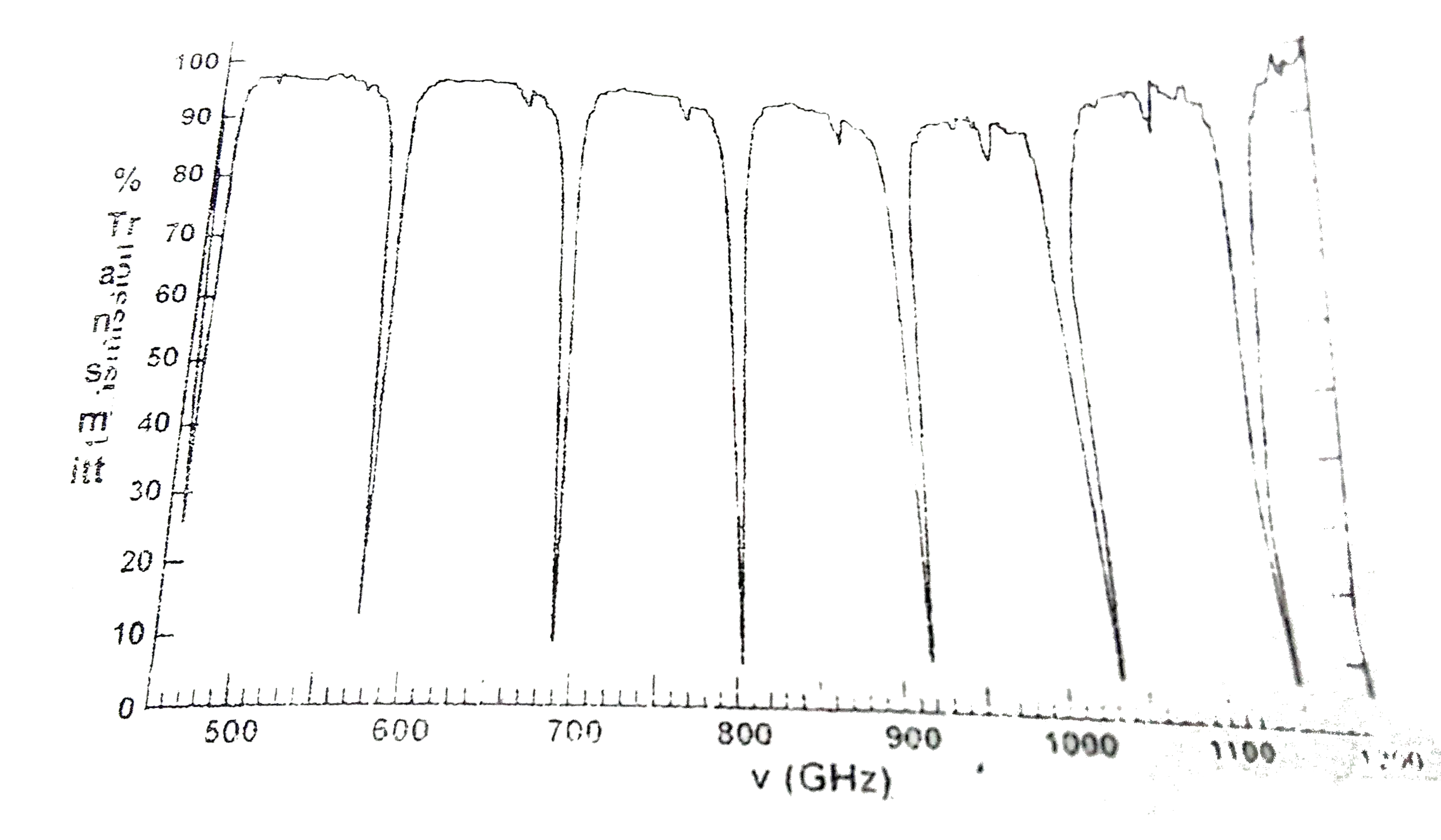Rotational energy levels of diatomic molecules are well described by the formula EJ=BJ(J+1), where J is the rotational quantum number of the molecule and B its rotational constant. B is related to the reduced
mass μ and the bond length R of the molecule through the equation B=h28π2μR2.
In general, spectroscopic transitions appear at photon energies which are equal to the energy difference between appropriate states of a molecule (hv=ΔE). The observed rotational transitions occur between adjacent rotational levels, hence ΔE=EJ+1−EJ=2B(J+1). Consequently, successive rotational transitions that appear on the spectrum (such as the one shown here) follow the equation h(Δυ)=2B.

By inspecting the spectrum provided, determine the following quantities for ^(2)C^(p)Cwithap∝riateunits<br>(a)Deltaupsilon(b)B(c)R
Text Solution
The correct Answer is:{:a) For example : ΔV=1150−1035=115GHz
{:b) B=hΔv2=6.63×10−34×115'×1092=3.81×10−23J
{:c) μ=m(C)×m(O)m(CO)=12×1628=6.86a.u.=1,14×10−26kg
For interatomic distance R:
R=h2π√2μB=3.63×10−342×3.14√2×1.14×10−26×3.81×10−23=1.13×10−10m=1.13Å
|
Similar Questions
Knowledge Check
In a diatomic molecule, the rotational energy at given temperature
AObeys Maxwell's distributionBHave the same value for all moleculesCEquals the translational kinetic energy force moleculeDIs (2/3) rd the translational kinetic enery each moleculeIn a diatiomic molecule, the rotational energy at a given temperature
Aobeys Maxwell's distributionBhave the same value for all moleculesCequals the translational kinetic energy for each moleculeDis (2/3) rd the translational kinetic energy for each moleculeDiatomic molecules like hydrogen have energies due to both translations as well as rotational motion. From the equation in kinetic theory pV=23E,E is
AThe total energy per unit volumeBonly the translational part of energy because rotational energy is very small compared to the translational energy.Conly the translational part of the energy because during collisions with the wall pressure relates to change in linear momentumDthe translational part of the energy because rotational energies of molecules can be of either sign and its average over all the molecules is zero
In a diatiomic molecule, the rotational energy at a given temperature
View SolutionDiatomic molecules like hydrogen have energies due to both translations as well as rotational motion. From the equation in kinetic theory pV=23E,E is
View SolutionThe average rotational kinetic energy of hydrogen molecule at a temperature T is E. The average translational kinetic energy of helium at same temperature will be:
View SolutionA diatomic molecule has moment of inertia I. By applying Bohr's quantisation condition, its rotational energy in the nth level (n = 0 is not allowed) is
View SolutionThe average rotational kinetic energy of hydrogen molecule at a temperature T is E. The average translational kinetic energy of helium at same temperature will be:
View Solution
